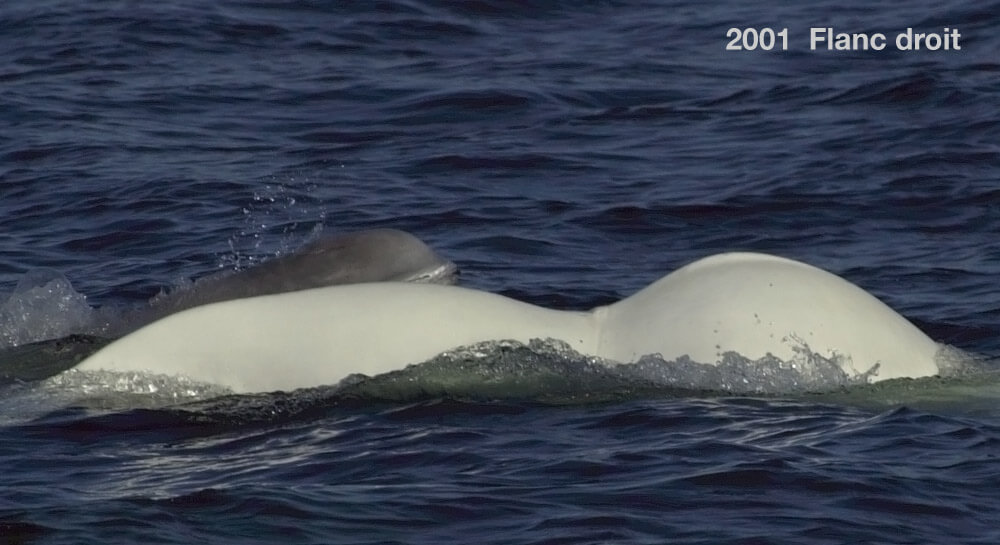Many researchers identify whales using photo-identification, thus by their physical appearance. But can they identify individuals based on their behaviour? Can one recognize an individuality – a personality one would say in the case of humans – in some cetaceans?
“Definitely,” affirms Robert Michaud, Scientific Director of the Group for Research and Education on Marine Mammals. We can observe social habits, a role within the community they belong to, regular associations with the same individuals, favourite “stomping grounds”, and sometimes even recognizable or remarkable behaviour. “
Well-known temperaments in the St. Lawrence
Researcher Pierre Béland describes the beluga Pascolio as “a little hunchback who loves to play and is easily intrigued, a faithful friend who seems to recognize our boat from afar and who never fails to come say, ‘Hello, here I am, I know who you are,'” in his book Beluga: a farewell to whales. Robert Michaud confirms: “Thanks to his spinal deformity, Pascolio is physically recognizable. When we began our research, she came to see us frequently, she was very curious… and still is. But because she had this diagnostic physical trait, we were sure that it was the same beluga every time,” explains Robert Michaud.
Now an old female, Yogi has always been known as a loner. A member of the Saguenay community by way of her geographic habits, she always swims alone and, even when she is near a herd, remains on the sidelines.
These behaviours are easily recognizable for humans because they isolate the individual in question from the rest of the group and are visible at the surface. It is quite possible that traits such as those of a jester, grouch, or antagonist can be found within a whale community, but that researchers are unable to detect them.
Belugas are not the only ones who exhibit individual temperaments. Visitors to the Marine Mammal Interpretation Centre (CIMM) will recall the humpback whale Nocturne featured in the film Rencontres avec les baleines du Saint-Laurent, who let observers pet her.
Thus, only a seasoned observer will be able to differentiate whales based on their character. And, as with humans, certain individuals swagger more than others, and those are the ones who are most easily recognized!







